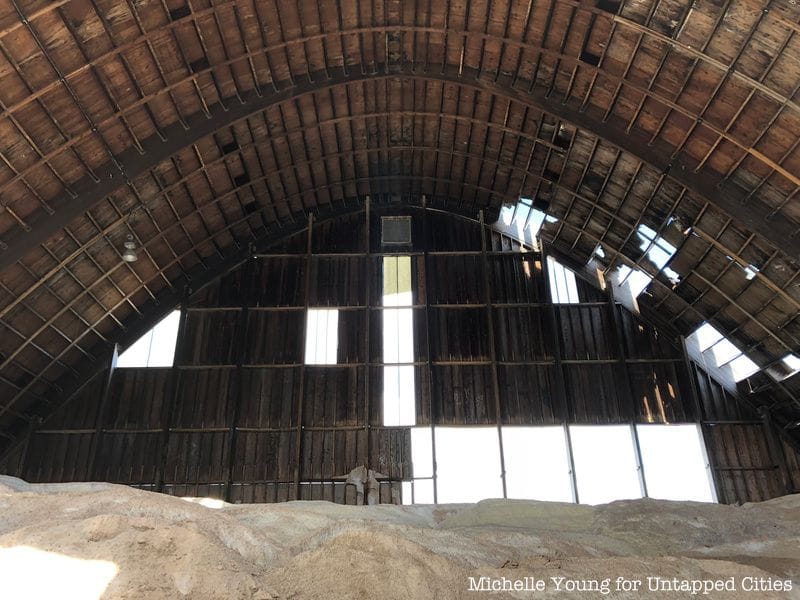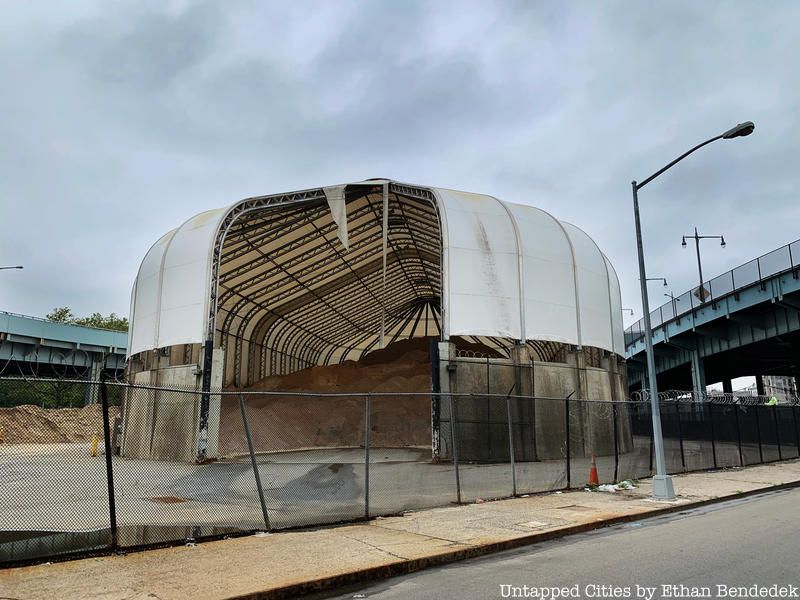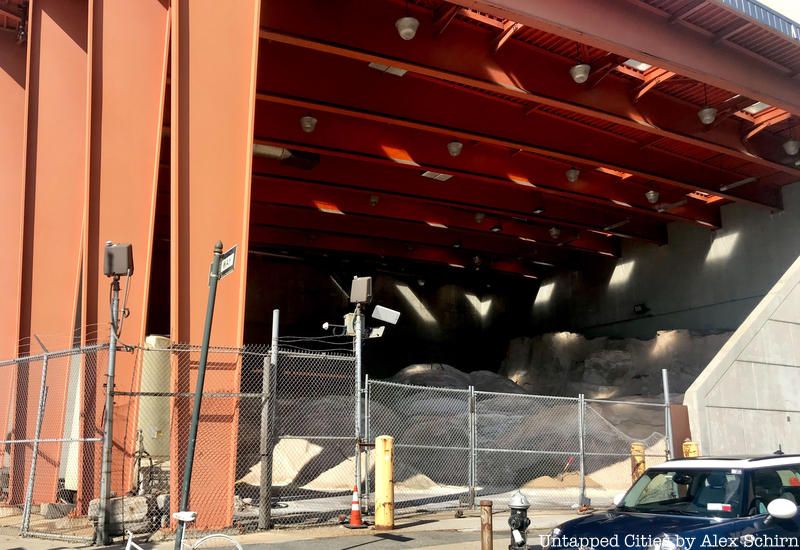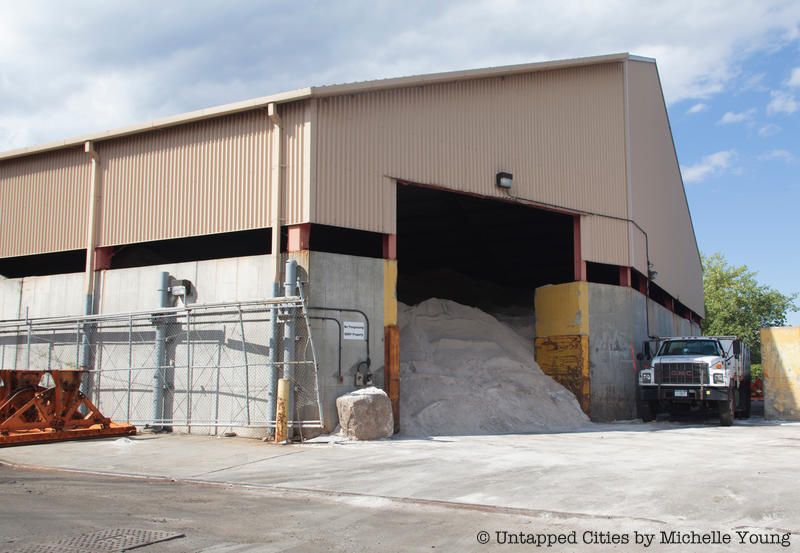Last Chance to Catch NYC's Holiday Notalgia Train
We met the voices of the NYC subway on our nostalgia ride this weekend!

Who says utilitarian architecture has to be boring? NYC salt sheds can be stunning pieces of architecture!

Who knew salt sheds could be architecture porn? These seemingly mundane municipal structures have become the source of photographic inspiration for many. There are around 40 salt sheds in New York City with a stockpile of approximately 700 million pounds of salt, according to the Department of Sanitation (DSNY). The salt is dispersed by more than 700 salt spreaders across the 6,000+ miles of road in the five boroughs. Take a look at a few of New York City’s unique salt sheds, which provide a steady supply of road salt for snowy days.

In 2018, we had a chance to visit the New York City Department of Sanitation (DSNY)’s garage and salt shed complex in Hudson Square, Tribeca. Designed by WXY Architecture + urban design and Dattner Architects, it currently serves 300,000 residents in Manhattan Community Districts 1, 2, and 5, and has been rewarded for for its excellence in environmental sustainability.
Adjacent to the garage building is a 70-foot, architecturally stunning, crystalline-shaped salt shed. With a price tag of $20 million, this 5000-ton capacity shed has a few fascinating features that distinguish it from the other salt sheds around the city that are stocked throughout the winter. While the salt crystal shape of the structure is a remarkable piece of public art that puts all other salt sheds to shame, the unorthodox design actually stems from engineering work. The walls of the shed are taller on the side facing the water, allowing for the salt to settle at its natural slanted angle of 32 degrees, also called the angle of repose. This unique way of storage allows for trucks to drive up one side, and dump salt more conveniently onto the mound, which will then settle in its own stable way.
Furthermore, the doors of this first fully enclosed shed of DSNY are a whopping 35 feet tall and 24 feet wide, allowing for easy access for trunks moving in and out of the shed. The interior walls are lined with metal plating to prevent damage from the constant stream of trucks. With six-feet thick walls, it’s also safe to assume that no severe storm will be damaging the building and tarnishing the salt. Read more about the salt shed and garage here.

Located by that water on 52nd Street in Sunset Park, a seemingly dilapidated building acts as a salt shed with a drop-off zone to its side. To give you a sense of its size, Flickr user -ytf- has made a stereoscopic 3D image of the shed, which offers a stunning view of its interior. To get the effect to work, the photographer says to sit two to three feet away and “gently cross your eyes.” You can view the full-resolution photo here.

The Department of Sanitation is among many tenants that occupy the Brooklyn Navy Yard, one of the nation’s “most storied naval shipbuilding facilities” that has been transformed into a thriving commercial and manufacturing hub. Today, it’s home to companies specializing in industries ranging from media communications to metal fabrication.
Flickr user roccocelli has produced a perfectly balanced image of the salt shed there, which is located on Kay Street, next to Pier K. It’s the major structure on the DSNY occupied site, which was formerly home to the Nassau Works Manufactured Gas Plant.

Here’s the Lower East Side salt shed situated underneath an overpass of the Manhattan Bridge and located right next to the Murry Bergtraum Softball Field by Pike Slip. Notable mostly for its location, this uniquely placed salt shed doesn’t have an unloading area, so loads of salt have to be pulled out of the back of the trucks directly.

This white-dome, circular structure was built in 2010, and sits on 125th Street in East Harlem, amidst a maze of ramps for the RFK Triborough Bridge.
According to Gizmodo, it’s larger than both the Sunset Park and Lower East Side facilities and arguably, the coolest looking one too.

Another salt shed is located by the West Side Highway on the corner of 55th Street, adjacent to the Department of Sanitation’s Manhattan 4 garage.It’s shielded by a bright orange frame that one passerby actually confused for an Alexander Calder sculpture. In fact, during the 25th Annual Art Commission Awards for Excellence in Design in 2007, Michael Friedlander, the director of special projects for the Sanitation Department, was awarded for his work on this specific salt shed in addition to a garage on 543 East 73rd Street.

On 301 West 215th St. and 9th Ave. by the Harlem River, the Manhattan 12 Department of Sanitation garage is also home to a salt storage facility. Although this shed definitely looks more standard compared to the others on this list, this Inwood location is recognized in general because of its three massive smokestacks, which are part of a decommissioned DSNY “destructor plant” that opened in 1934. While they no longer operate, they once incinerated 7,500 tons of New York City garbage on a daily basis, coughing up lots of soot and smoke in the process.

In Staten Island, the Atlantic Salt Company (561 Richmond Terrace) is headquartered at the historic Richmond Terrace facility, nearby the Kill van Kull maritime superhighway. As New York City’s last remaining salt dock, the facility mines salt in locations all over the world, and provides most of the road salt that New York City uses.
To bring the salt to the rest of the metropolitan area, cargo ships bring over salt loads, which are moved on to the Atlantic’s yard. Then, front-loading trucks pass on the shipment to tractor-trailers that distribute it further to local municipalities.
Given that the total capacity of New York City’s salt sheds can store 235,000 tons of rock salt and 330,700 gallons of calcium chloride deicing solution, we think these structures deserve more than a passing glance. Plus, if you can get inside one, it’s pretty awe-inspiring.
Next, check out How the NYC Subway, LIRR, and Metro-North Respond to Snowstorms
Originally published January 2018
Subscribe to our newsletter